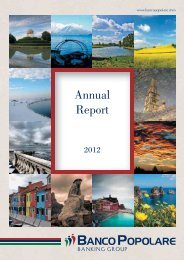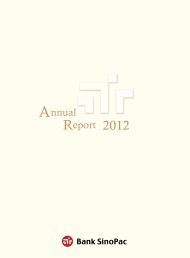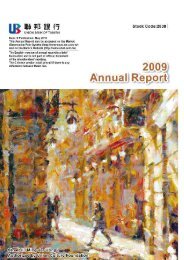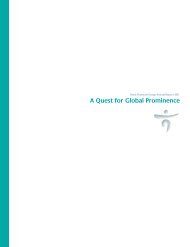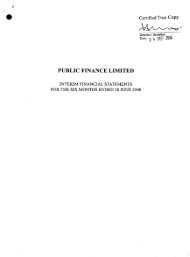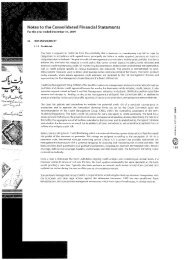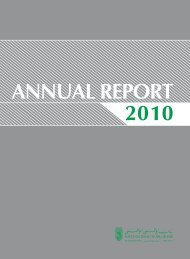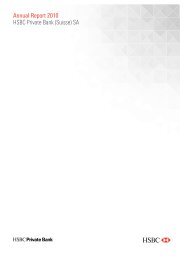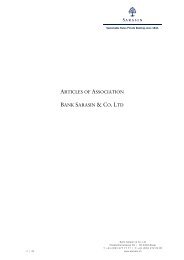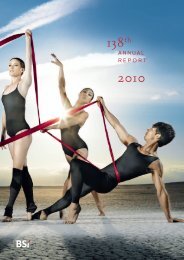Annual Report 2011 - Hong Kong Monetary Authority
Annual Report 2011 - Hong Kong Monetary Authority
Annual Report 2011 - Hong Kong Monetary Authority
Create successful ePaper yourself
Turn your PDF publications into a flip-book with our unique Google optimized e-Paper software.
4. Executive Committee<br />
The Executive Committee is comprised of 10 members<br />
appointed by the Board of Directors and operates as a<br />
collegial body, holding weekly meetings that on average<br />
last half a day. In <strong>2011</strong> it met 51 times. Resolutions are<br />
passed by an absolute majority of the members present,<br />
provided they form a quorum. In the event of a tie, the<br />
Chairman has the casting vote. The Executive Committee’s<br />
resolutions may also be passed by circular as prescribed<br />
in the Bylaws. Minutes are taken at the meetings of the<br />
Executive Committee; they are duly numbered and signed<br />
by the Chairman and Vice-Chairman. Each meeting follows<br />
a standing agenda that covers the full range of the Bank’s<br />
operations.<br />
Each of the Bank’s departments is placed under the supervision<br />
of a member of the Executive Committee (see Group<br />
structure and shareholders, p. 24). At meetings members<br />
report to the rest of the Committee on any major developments<br />
that have occurred in their area of responsibility.<br />
The members of the Executive Committee receive documents<br />
and statistics issued weekly, monthly or quarterly by<br />
the departments and groups concerned. In particular, they<br />
receive a progress report containing the following: the<br />
Chief Executive Officer’s comments; various statistics including<br />
summarised monthly accounts comparing actual<br />
business performance with the budget; monthly lists of<br />
financial investments; the financial statements of the<br />
various entities forming the Banque Privée Edmond de<br />
Rothschild Group; a report on risk control noting market,<br />
interest rate and counterparty risks; the level of shareholders’<br />
equity; and risks of a legal and reputational nature<br />
(cf. compliance). The Executive Committee can also rely on<br />
the supervision and monitoring facilities described in<br />
section 3.6 above. These facilities are honed year after year<br />
to enhance their effectiveness.<br />
To help it perform its duties, the Executive Committee has set<br />
up the following committees: a Management Committee; a<br />
Traditional Management Committee; an Alternative Management<br />
Committee; an Investment Funds Committee; a Bond<br />
Investment Funds Committee; a Strategy Committee; a<br />
Standing Committee for Operations; a Credit Committee;<br />
a Risk Committee; a Product Risk Committee; a Fees<br />
Committee; a Broker Committee; a Compliance Committee;<br />
a Security Committee; a Steering Committee; an Asset<br />
& Liability Management Committee; a Trading Committee<br />
and a Training Committee.<br />
Minutes are taken at the meetings of these committees.<br />
They are numbered, dated and signed, and a copy is remitted<br />
to each member of the Executive Committee.<br />
Other Bank executives, as well as employees, internal auditors<br />
and external advisers or experts may also be invited to<br />
the meetings of the Executive Committee. However, these<br />
persons may only participate in an advisory capacity.<br />
CORPORATE GOVERNANCE 37



